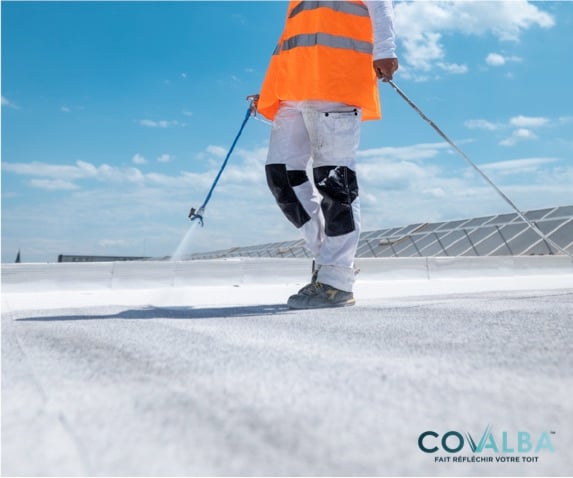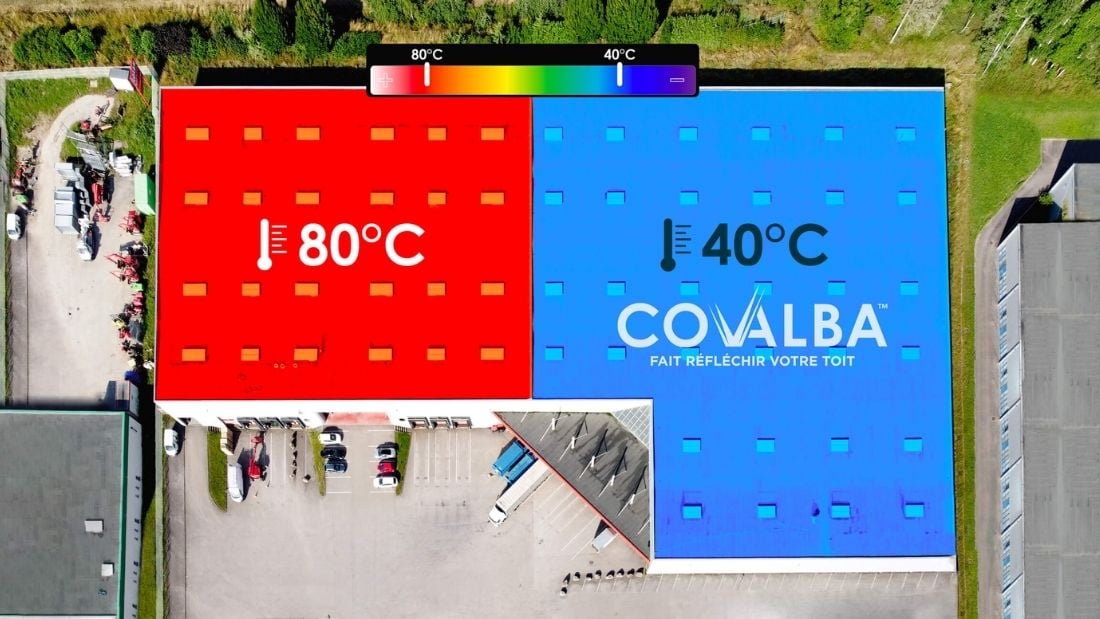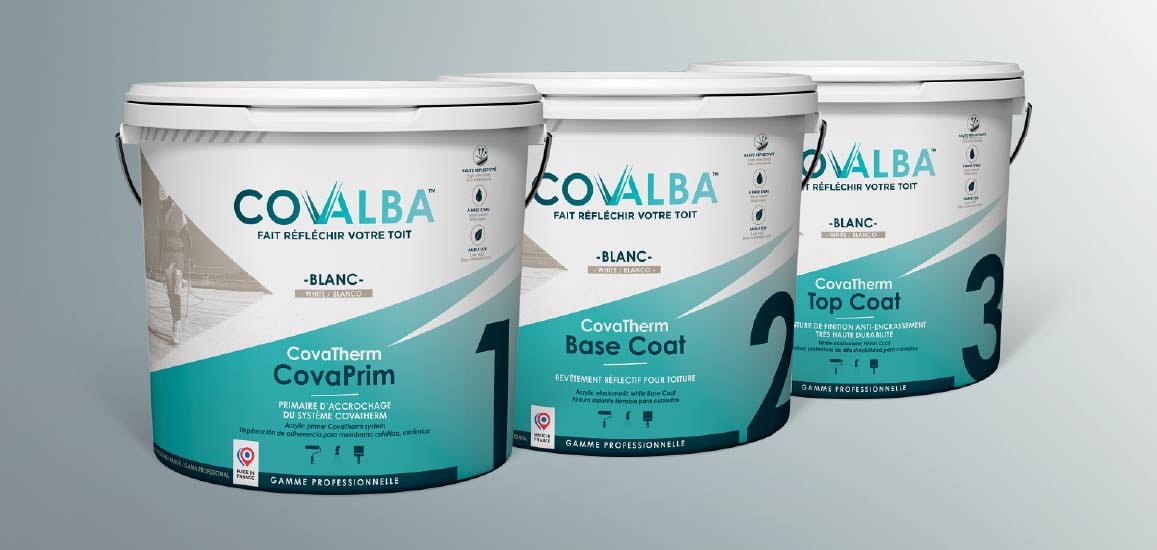In France, the government has set up a number of financial aids and subsidies to enable professionals to undertake insulation and energy renovation work. While individuals can take advantage of grants such as MaPrimeRénov', professionals are not left out, thanks in particular to the Prêt Eco-Energie.
However, not all work is eligible for financial assistance. In this article, Covalba takes a closer look at the subsidies available for painting your roof white with a cool roof coating. Professionals can also apply for an Energy Savings Certificate (Certificat d'Économie d'Énergie) under the BAT-EN-112 form.

Why paint your roof white?
As professionals know, managing the energy performance of buildings is an important issue, for a number of reasons. In fact, as part of a CSR approach, your company can enhance its brand image and the attractiveness of its employer brand.
Managing energy performance also enables savings to be made on energy bills, and thus helps defend business performance. Finally, from a legal point of view, improving the energy performance management of buildings enables compliance with the standards imposed by the government as part of the tertiary sector decree.
However, managing your buildings' energy consumption can sometimes be a real challenge. It's not always easy to know where to make energy savings and how to limit unnecessary consumption. Fortunately, there are a number of methods available today that can help you address both issues at the same time.

Cool roofing, for example, is a thermal optimization process that involves painting the entire roof surface white. To achieve this, a roofing professional applies an anti-heat paint capable of reflecting the sun's ultraviolet rays. With Covalba anti-heat coatings, switching from a dark to a white roof can reduce interior temperatures by up to ten degrees in summer. This gain makes it possible to drastically limit the use of air conditioning and reduce energy consumption by up to 40%.
The cool roof can be used on any type of flat roof, whether the membrane is made of EPDM or PVC.
💡 A ll our content on CEE grants and tertiary sector regulations

What subsidies are available for the application of a cool roof coating?
So, cool roofing is an excellent solution for optimizing the energy performance of your buildings. However, painting your roof white obviously comes at a cost. Although it can save money later on, some professionals may find it difficult to finance the work. To alleviate this problem, it is possible to take advantage of a grant or financial aid made available by the State or ADEME.
There are two types of subsidy available to help companies finance their roofing. Firstly, professionals can apply for a Prêt Eco-Energies (PEE) through BpiFrance. This loan can be worth up to several tens of thousands of euros, and is part of an overall energy renovation strategy.
The second form of assistance available to subsidize the painting of a white roof is the energy bonus for professionals, also known as CEE (Certificat d'Économie d'Énergie).
How to benefit from the CEE for reflective coatings?
Each CEE is supported by an associated data sheet that structures the entire technical process. In the case of cool roof, the CEE sheet to be followed is BAT-EN-112. As with any work eligible for CEE, it is imperative to use the services of an energy supplier. In fact, Energy Savings Certificates are made available to professionals and private individuals via energy, LPG or fuel suppliers such as EDF or Carrefour.
However, this is not the only condition. The framework for CEE-eligible work is strict. Professionals wishing to subsidize their white roofs with this aid must therefore comply with the following conditions:
- Have the work carried out by a professional.
- Carry out the work on a building in the tertiary commercial sector.
- Carry out the work in a building equipped with a heat pump.
- Installing the coating on a roof that does not already have a reflective coating.
- The building to which the cladding is applied must be enclosed and air-conditioned.
In addition to these requirements, the reflective coating used must also meet specific criteria to qualify for CEE BAT-EN-112. The cladding used must have a Solar Reflectance Index (SRI) of over 100, as defined by ISO 2810, and a lifespan of 20 years or more.
If the professional meets all the conditions, all that remains is to find a craftsman to carry out the work. With this in mind, Covalba offers its CovaTherm reflective coating, which is fully compatible with CEE.

To find out more :